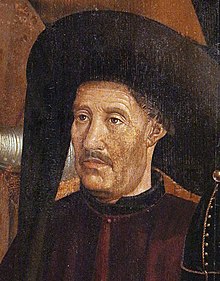
The School of Sagres (Escola de Sagres in Portuguese), also called Court of Sagres is supposed to have been a group of figures associated with fifteenth century Portuguese navigation, gathered by prince Henry of Portugal in Sagres near Cape St. Vincent, the southwestern end of the Iberian Peninsula, in the Algarve.
Contents
- Scholarly debate
- Romantic view
- Critical view
- Majorcan influence
- First results
- See also
- References
- External links
Since the nearby port of Lagos was the actual point of departure for numerous expeditions of exploration and colonization along the African coast and Atlantic islands, the existence of a "school" at Sagres has been questioned by some historians. [1] [2] [3] [4] After the death of Prince Henry (1460), the center of Portuguese discoveries center shifted to Lisbon.
The first written mention of a "school" at Sagres in English dates from the seventeenth century by Samuel Purchas, although Damião de Gois had already pointed to a similar idea in the sixteenth century. Portuguese and English historians settled on the term and it gained popularity.

